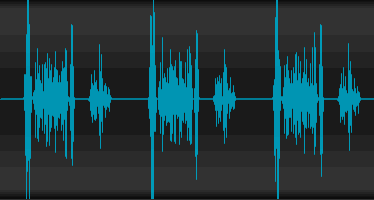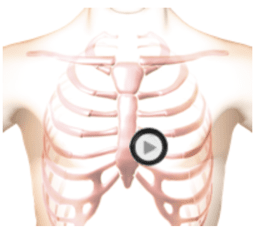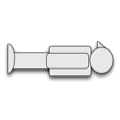Auscultation Position
Holosystolic murmurs are usually best heard at the apex or lower left sternal border.

Ventricular Septal Defect
Ventricular Septal Defect (VSD) is a congenital condition associated with abnormal blood flow between the left ventricle and the right ventricle due to a shunt (hole) in the wall that separates the right and left ventricles. Holosystolic murmurs can be auscultated over the left 3rd and 4th intercostal spaces and along the sternal border.
Our reference guide for a holosystolic murmur caused by ventricular septal defect:
Ventricular Septal Defect Lesson

